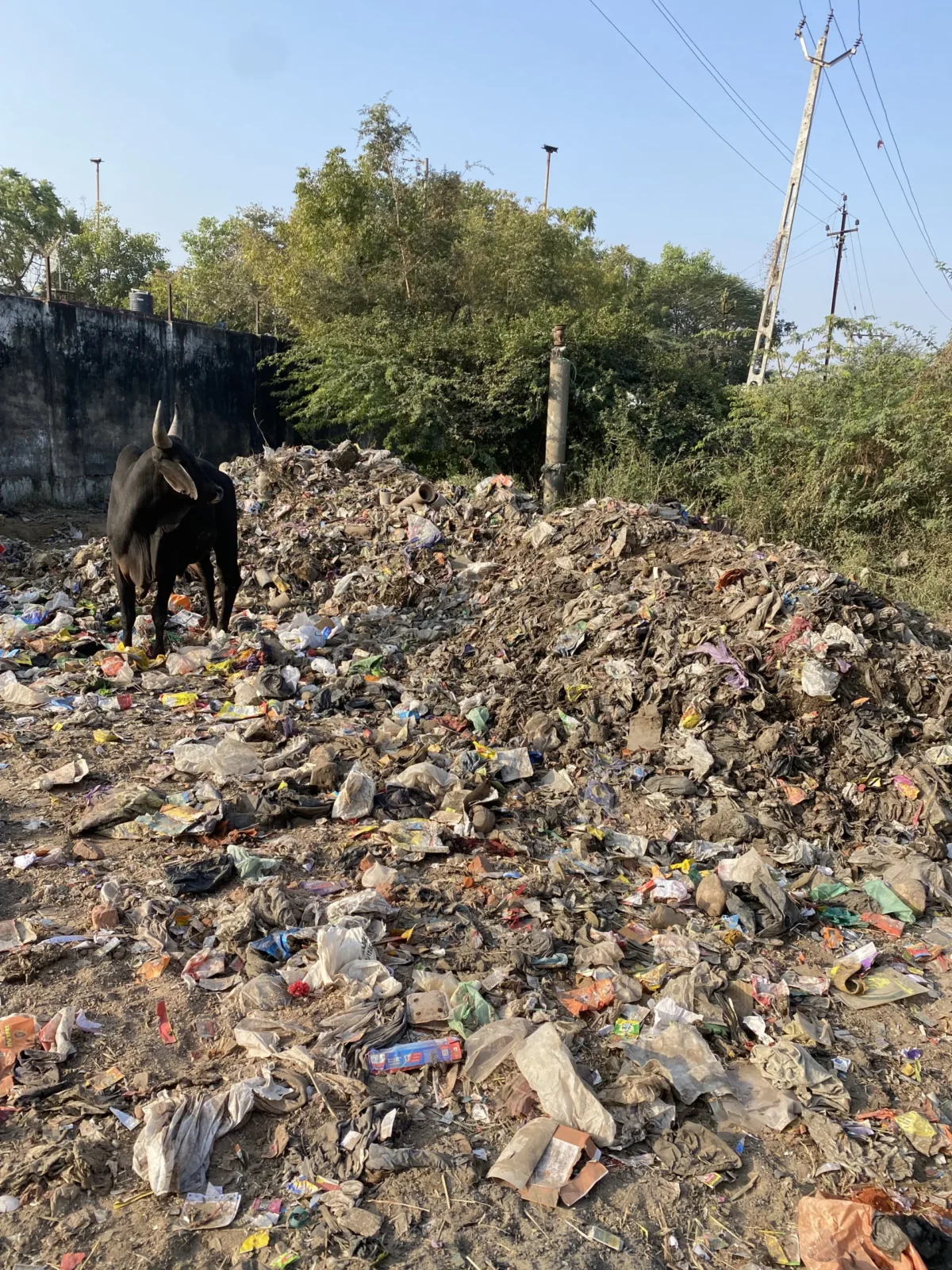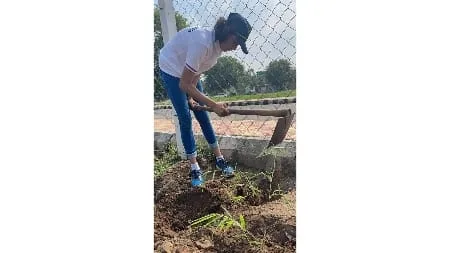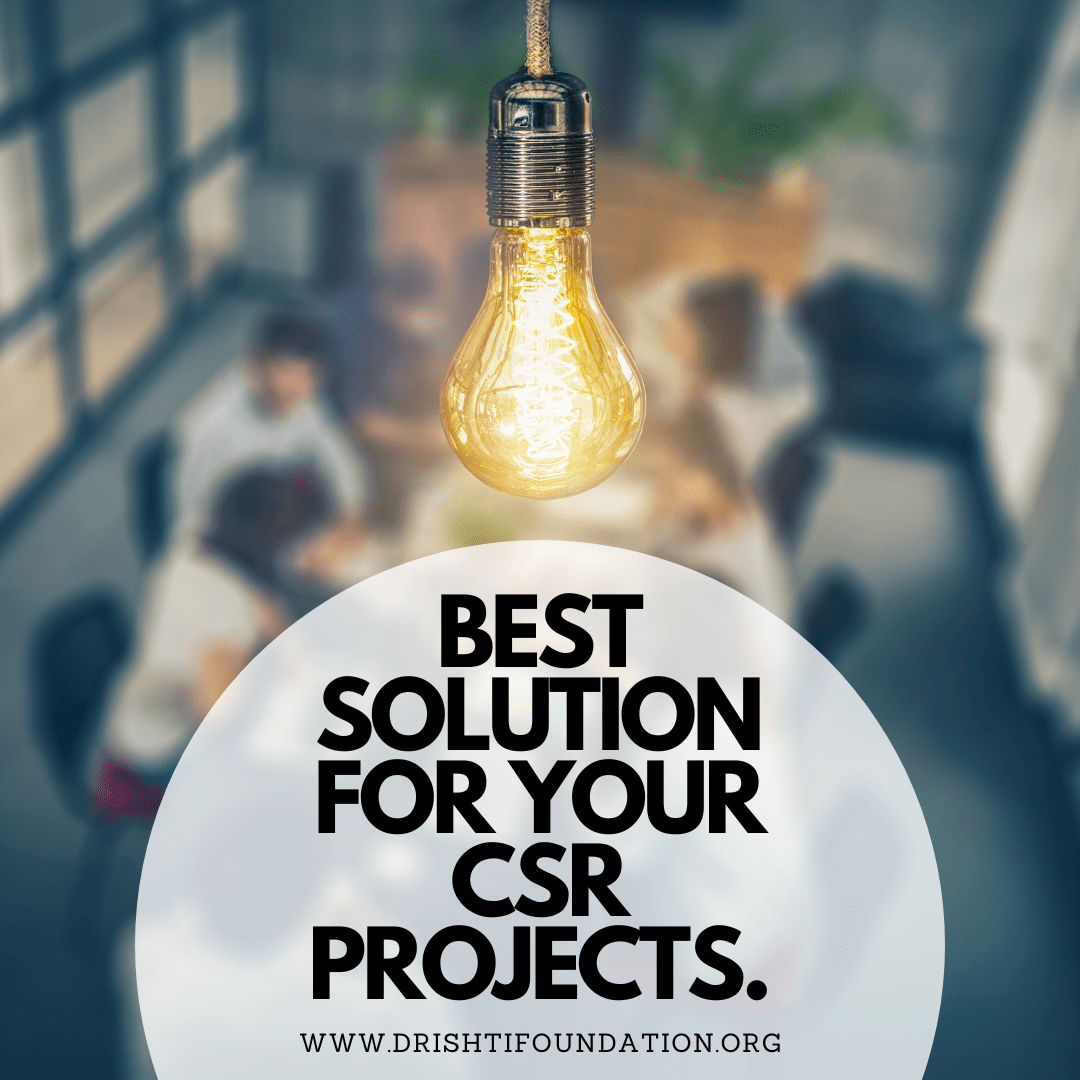Drishti Foundation Trust’s Water Conservation Efforts: A Journey Through Sujalam Sufalam Jal Sanchay Abhiyan and the Bhogavo River Initiative
Water is the essence of life. It sustains ecosystems, supports agriculture, powers industries, and is critical for human survival. Yet, despite its significance, water resources are rapidly depleting worldwide, and India is no exception. India, with its vast population and agricultural dependency, is facing one of the worst water crises in its history. Addressing this pressing issue requires a multifaceted approach, focusing on both water conservation and rejuvenation efforts.
At Drishti Foundation Trust, we believe that water conservation is not just a task but a responsibility that every citizen, community, and organization must take seriously. With more than a decade of experience working in the fields of health, education, and environmental initiatives, we have committed ourselves to numerous water conservation projects across the country. One of our proudest accomplishments is our participation in the Sujalam Sufalam Jal Sanchay Abhiyan 2020 and our pivotal role in the desilting and cleaning initiative of the Bhogavo River near Dhingda Village in the Dholka Taluka of Ahmedabad District, Gujarat.
In this blog, we will explore the significance of water conservation, Drishti Foundation Trust’s ongoing efforts, and our latest initiatives to restore and rejuvenate water bodies across India, particularly the Bhogavo River initiative. This journey exemplifies our commitment to restoring India’s water resources, protecting ecosystems, and ensuring sustainable access to clean water for generations to come.
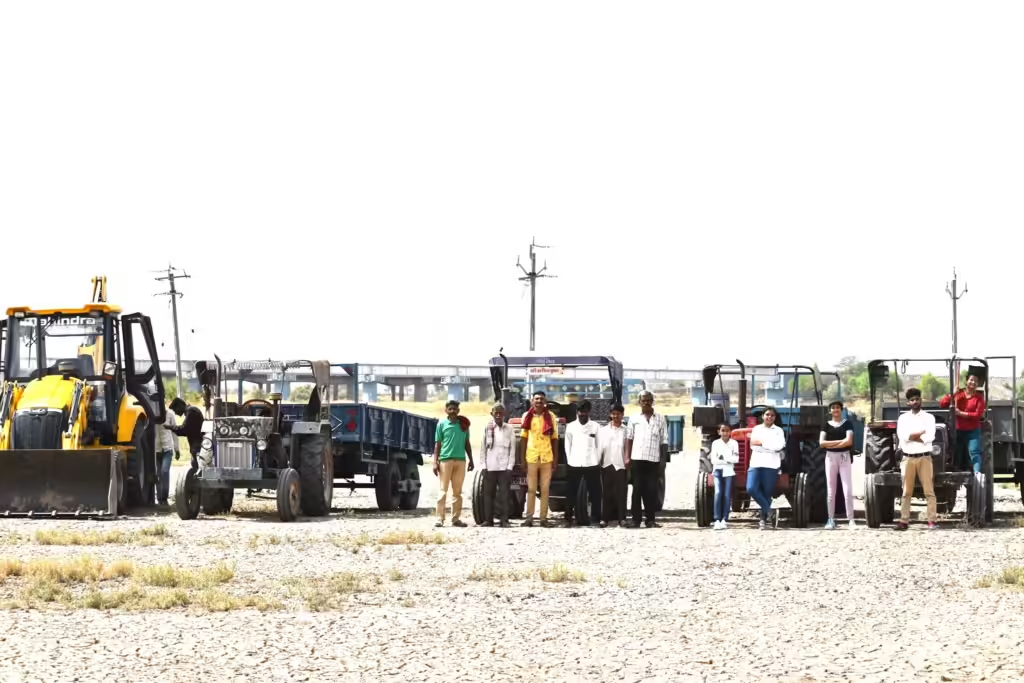
Understanding India’s Water Crisis: A Call for Urgent Action
India’s water crisis is an issue that affects millions of lives. According to the National Institution for Transforming India (NITI Aayog), India is suffering from the worst water crisis in its history, with nearly 600 million people facing acute water shortages. Furthermore, around 21 major cities, including Delhi, Bengaluru, Chennai, and Hyderabad, are expected to run out of groundwater by 2030. The key contributors to this alarming situation include:
- Rapid urbanization: Increased urbanization has led to higher water demand while depleting available resources. Urban planning often neglects sustainable water management practices.
- Agricultural practices: Agriculture consumes more than 80% of India’s water resources, with a significant amount lost due to inefficient irrigation methods.
- Climate change: Unpredictable rainfall patterns and rising temperatures are exacerbating the crisis. Some regions experience floods, while others are plagued by droughts.
- Lack of awareness: Many communities lack awareness about the importance of water conservation and proper water management practices.
Sujalam Sufalam Jal Sanchay Abhiyan: A Government-Led Movement
The Government of Gujarat launched the Sujalam Sufalam Jal Sanchay Abhiyan in 2018, a state-wide water conservation initiative aimed at increasing water availability by desilting rivers, ponds, and lakes, as well as deepening water bodies. The objective of this campaign is to tackle water scarcity by creating sustainable water reserves for future generations. The initiative is built on community participation, with local villagers, organizations, and governmental bodies working hand in hand to restore water bodies and promote conservation practices.
The campaign has several key components:
- Desilting and deepening of lakes, ponds, and rivers: By removing silt, water bodies can hold more water during the monsoon, thus increasing groundwater recharge.
- Building check dams and rejuvenating old structures: This helps in arresting rainwater runoff and ensuring it percolates into the ground to replenish aquifers.
- Rainwater harvesting: Promoting the adoption of rainwater harvesting systems in households, schools, and government buildings.
Since its inception, Sujalam Sufalam Jal Sanchay Abhiyan has rejuvenated thousands of water bodies, increasing the state’s water reserves. Inspired by the success of the campaign, Drishti Foundation Trust joined hands with the initiative in 2020, focusing on the Bhogavo River near Dhingda Village in Dholka Taluka, Ahmedabad.
Bhogavo River Initiative: Drishti Foundation Trust’s Role in River Rejuvenation
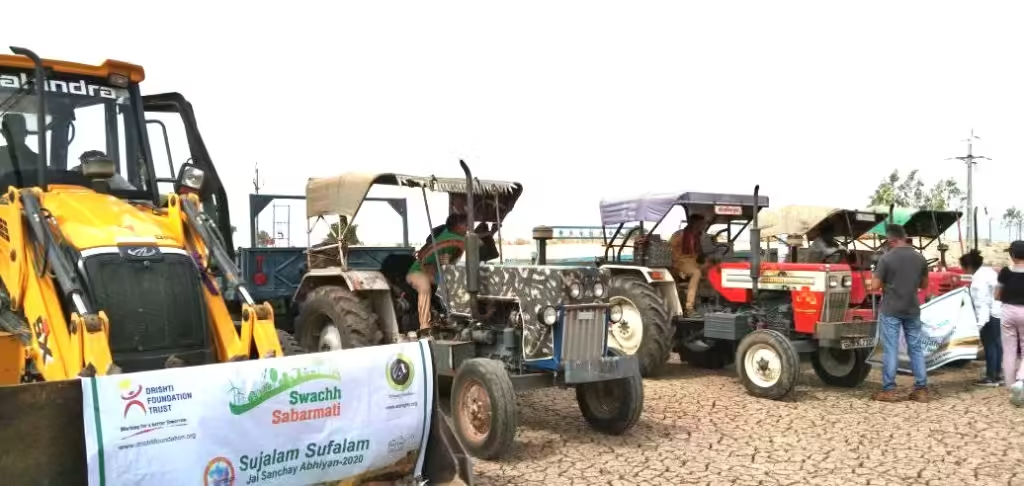
The Bhogavo River, once a lifeline for several villages in the Ahmedabad district, had fallen into disrepair due to neglect and siltation. Over the years, the river’s capacity to store water diminished, negatively impacting local agriculture, groundwater recharge, and biodiversity. A river that once flowed abundantly was now reduced to a trickle, causing distress among farmers and the local population.
In 2020, under the banner of Sujalam Sufalam Jal Sanchay Abhiyan, Drishti Foundation Trust took on the challenge of reviving the Bhogavo River near Dhingda Village. Our goal was to restore the river’s water-holding capacity and bring it back to its former glory, benefiting both the environment and the people who depend on it.
The Objectives of the Bhogavo River Rejuvenation Project
The Bhogavo River initiative was designed with a multi-pronged approach to address both immediate and long-term challenges. The key objectives of the project included:
- Desilting and Deepening: Remove the accumulated silt and debris from the riverbed to increase its water-holding capacity.
- Restoration of Natural Flow: Ensure the natural flow of the river is maintained, enabling it to sustain life and ecosystems.
- Groundwater Recharge: Improve groundwater recharge in the surrounding areas, which would help alleviate water scarcity for irrigation and domestic use.
- Community Engagement: Involve local communities in the conservation process to create awareness and promote sustainable water management practices.
- Biodiversity Conservation: Protect the river’s ecosystem by preserving aquatic life and ensuring a healthy balance of flora and fauna.
Implementation Strategy: A Collaborative Effort
The Bhogavo River rejuvenation project was implemented in collaboration with the local administration, community members, and various stakeholders. Our strategy focused on the following key areas:
- Desilting Operations: Using heavy machinery and manual labor, we began the desilting process by removing large quantities of silt that had accumulated over the years. This allowed the river to regain its depth and flow more freely.
- Constructing Check Dams: We built several check dams along the river to arrest water flow and enhance percolation into the groundwater table. These check dams also help retain water during dry seasons, ensuring a continuous water supply for irrigation.
- Promoting Rainwater Harvesting: To complement the rejuvenation efforts, we encouraged local communities to adopt rainwater harvesting systems. These systems would ensure that rainwater is collected and stored for future use, reducing the reliance on river water alone.
- Community Involvement: We believe that no conservation effort can succeed without the active participation of local communities. As such, we conducted awareness programs, workshops, and village meetings to educate residents about the importance of water conservation. We also encouraged villagers to take responsibility for maintaining the restored river.
- Monitoring and Maintenance: After the initial rejuvenation work, we established a regular monitoring and maintenance schedule to ensure that the Bhogavo River continues to thrive. This includes periodic desilting, repairing check dams, and keeping the river free from pollutants.
The Impact of the Bhogavo River Initiative
The Bhogavo River initiative has had a profound and lasting impact on the surrounding communities and the environment. The successful desilting and cleaning of the river have yielded the following outcomes:
- Increased Water Storage: The desilting of the river has increased its capacity to store water, ensuring a more reliable water supply for irrigation and domestic use.
- Groundwater Recharge: The project has significantly improved groundwater recharge in the region. This has reduced dependency on external water sources and provided much-needed relief to farmers.
- Biodiversity Restoration: The rejuvenation of the river has led to the revival of aquatic life and the restoration of a healthy ecosystem. Fish, birds, and other wildlife have returned to the area, enhancing biodiversity.
- Economic Benefits: Local farmers have reported increased agricultural productivity due to the availability of water. This has led to improved livelihoods and economic stability in the region.
- Community Empowerment: The project has empowered local communities by involving them in the conservation process. Villagers now take an active role in maintaining the river and have a greater appreciation for water conservation practices.
The Importance of Water Conservation in India’s Future
The Bhogavo River initiative is just one example of how water conservation efforts can make a tangible difference in communities facing water scarcity. As India continues to grapple with a growing water crisis, it is essential that similar projects be undertaken across the country. Water conservation is not just a government responsibility but a collective effort that involves individuals, organizations, and communities working together.
At Drishti Foundation Trust, we are committed to continuing our work in water conservation, environmental protection, and community development. Our projects are designed to create sustainable solutions that benefit both people and the planet. The lessons learned from the Bhogavo River initiative will serve as a model for future river rejuvenation projects, and we hope to inspire others to join us in the fight to conserve India’s precious water resources.
Conclusion: Drishti Foundation Trust’s Commitment to a Sustainable Future
The successful rejuvenation of the Bhogavo River stands as a testament to what can be achieved when communities, organizations, and governments come together with a shared vision. At Drishti Foundation Trust, we take great pride in our contributions to the Sujalam Sufalam Jal Sanchay Abhiyan 2020 and the positive impact we have made on the lives of those who depend on the Bhogavo River.
Water is the cornerstone of life, and its conservation is crucial to the survival of both humanity and the natural world. Through our ongoing efforts, we aim to restore and protect water bodies across India, ensuring that future generations have access to clean, reliable water resources.
Drishti Foundation Trust will continue to champion the cause of water conservation and environmental sustainability, one river, one pond, and one village at a time. Join us in our mission to create a greener, more sustainable future for all.
This blog provides an in-depth overview of our water conservation initiative in the Bhogavo River under the Sujalam Sufalam Jal Sanchay Abhiyan 2020. By sharing this story, we hope to spread awareness about the importance of water conservation and inspire others to take action in their own communities. Let’s work together to make every drop count!
Contact us to explore collaboration opportunities, learn more about our initiatives, or contribute towards making a difference that truly matters.
Facebook: https://www.facebook.com/DrishtiFoundationTrust/
Instagram : https://www.instagram.com/drishtifoundation
Youtube : https://www.youtube.com/drishtifoundationtrust
Twitter : https://www.twitter.com/dftindia
LinkedIn : https://www.linkedin.com/company/drishtifoundationtrust

